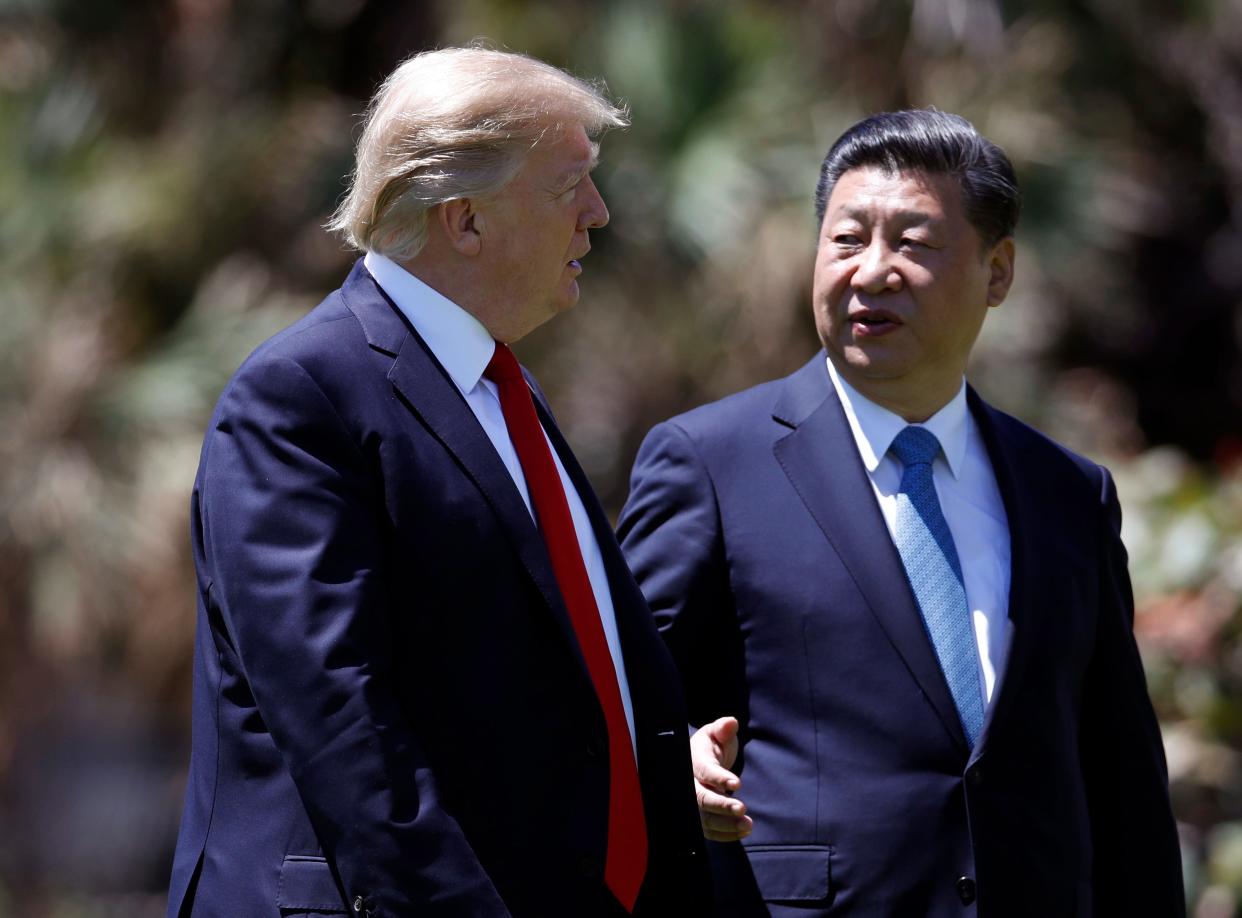Trump hits China with new tariffs, but still wants trade deal

WASHINGTON – With U.S.-China trade talks at a near-standstill, President Donald Trump escalated the long-running trade war Thursday by saying he will put a "small additional tariff" of 10% on another $300 billion in Chinese products.
Despite the additional penalty, the latest in a drawn-out trade war with the Chinese, Trump said on Twitter that "we look forward to continuing our positive dialogue with China on a comprehensive Trade Deal."
The new tariffs will take effect Sept. 1, Trump said, though he has changed his mind after making similar threats in the past.
U.S. markets fell by hundreds of points immediately after Trump's announcement on Twitter.
Budget: Senate approves 2-year budget deal, sending bill to Trump's desk
Our representatives have just returned from China where they had constructive talks having to do with a future Trade Deal. We thought we had a deal with China three months ago, but sadly, China decided to re-negotiate the deal prior to signing. More recently, China agreed to...
— Donald J. Trump (@realDonaldTrump) August 1, 2019
A U.S. team of trade negotiators returned from China this week. A Chinese delegation is scheduled to visit the United States in September for more talks of a new trade agreement. The parties had broken off talks in May due to a series of disputes.
Trump and Chinese counterpart Xi Jinping agreed to resume negotiations during a bilateral meeting at the G-20 summit in late June. At that time, Trump said he would hold off on further tariffs pending the new negotiations.
The two countries remain at odds over issues that include protections for intellectual property, forced technology transfers to the Chinese, non-tariff barriers, agriculture, services, the trade deficit, and enforcement of new trade rules, the White House said in a statement.
Speaking with reporters after his tariff tweet, Trump said he likes Xi, but the Chinese president is "not moving fast enough" on a new trade deal.
Defending the tariffs, Trump again protested what he called unfair Chinese trade practices, citing currency devaluation in particular. "China, for the last 20 years, has been taking hundreds of billions of dollars out of our country," the president said.
Trump made his latest tariff decision after a morning meeting with Treasury Secretary Mnuchin and Trade Representative Robert Lighthizer about the recent talks in China.
The additional tariffs do not include "the 250 Billion Dollars already Tariffed at 25%," the president said in a tweet.
The U.S.-China war has dragged on for more than a year-and-a-half, with each side hitting the other with tariffs on major exports.
In May, Trump increased previous tariffs from 10% to 25% on $250 billion in Chinese goods, prompting immediate retaliation from the Chinese. The Chinese tariffs have tended to target important political states, particularly those with big agriculture economies.
In his latest tweet citing new tariffs, Trump said China pledged to "buy agricultural product from the U.S. in large quantities, but did not do so." China has denied this claim, saying its companies have ordered tons of American soybeans, cotton, pork and sorghum.
Trump said tariffs have brought China to the negotiation table, and encouraged more companies to buy American products.
Critics, meanwhile, said the tariffs have done little more than raise prices for consumers worldwide.
"While President Trump’s new tariffs will be costly to Americans, unfortunately they are not unexpected," said Chad Bown, a senior fellow with the Peterson Institute for International Economics.
Bown added: "His affinity for tariffs is clear, as is his indifference to the consequences of his trade war."
This article originally appeared on USA TODAY: Trump hits China with new tariffs as US-China trade talks at a stall
